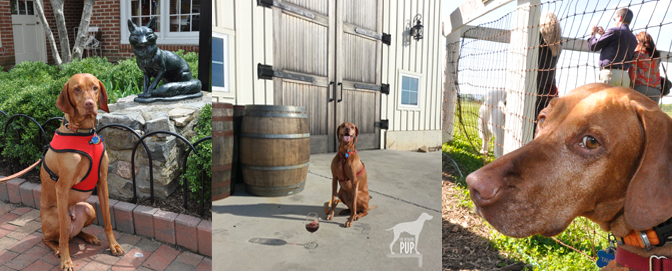
Virginia’s Loudoun and Fauquier counties await you and your dog!
From left: downtown Middleburg, Barrel Oak Winery, and Glenwood Park
Just an hour’s drive west of Washington, D.C., gridlock—both vehicular and political—gives way to polo grounds, stunning equine facilities, foxhounds, and vineyards. That’s right, Virginia has wineries. . . approximately 200 of them!

Here are three activities that will not only get you out to Virginia Hunt Country but also keep you coming back. Collectively these have earned a “3” on the Intrepid Pup wag-a-meter for appealing to your canine sensibilities, whether in viticulture, field sports, or history:
The Barrel Oak label features a dog gazing up into an oak tree and graces everything from a tasty Tour’ga Franc to a popular “Chocolate Lab” dessert wine. Tavish approves.
38°52′58.42″N, 77°54′13.95″W
Barrel Oak Winery (BOW)
Delaplane, VirginiaThere’s a lot to love about a dog-friendly vineyard that turns out award-winning wines and whose official greeter is a Vizsla named Birch. Sited on 22 acres with sweeping views of the foothills of the Piedmont, Barrel Oak Winery (a.k.a. BOW) has all the comforts of your living room—if you happen to have 20,000 vines growing in your backyard! Founders Brian and Sharon Roeder planted their first grapes in 2007, opened to the public in 2008, and haven’t looked back since.
While several of Virginia’s wineries now permit dogs on their grounds, it’s BOW that goes the extra mile by welcoming dogs into its lodge-like tasting room as well. That means your pup can sit patiently at your feet as you decide whether to sample 6 wines or splurge on the full flight of 12. Varietals include Viognier (Virginia’s state wine grape), Seyval Blanc, Vidal Blanc, Petit Manseng, Chardonnay, Merlot, Petit Verdot, Traminette, Chambourcin, and Norton.Vizslas unite…what a life! Tavish feels right at home hanging out in BOW’s expansive tasting room with the vineyard’s top dog, a senior Vizsla named Birch. When he’s not chilling out, Birch–with a slight hitch to his gait–systematically makes the rounds of checking on each and every table of guests on the patio. Birch is such a beloved staffer that the vineyard annually celebrates “Happy Birch-Day.” That’s just awesome.
BYOP (Bring Your Own Picnic), and select a wine from BOW. They’ll uncork it and bring the bottle out to you chilling in a bucket of ice. Plant yourself at a picnic table or at one of the bistro tables on BOW’s spacious patio overlooking the vineyard, and you’re good to go! There’s rarely a weekend when there isn’t live music, and BOW also generously hosts and supports various charity fundraisers, including animal rescue organizations, since the Roeders have four dogs of their own. As for your pups, “Doghaus Rules” apply; they need to stay leashed and at your side, and BOW makes that a fun place to be by providing a water bowl and complimentary dog biscuit. Intrepid Pup has now been out to BOW on several occasions, and there’s never been a time when Brian hasn’t personally come over to say hello. It’s that kind of hospitality that defines the BOW experience and makes a lasting impression on canine and human alike!
Tavish watches the field intently at Glenwood Park.
38°59′25.79″N, 77°44′8.79″W
Steeplechase Races at Glenwood Park
Middleburg, VirginiaExperience the beauty of Virginia’s Hunt Country by taking in one of its oldest and most unique traditions: a steeplechase race. The “season” here begins in late April and runs through mid October. While the Virginia Gold Cup and the International Gold Cup races are the most celebrated, there are plenty of smaller, more accessible events.
Crowds can get an up-close look at the horses warming up in the paddock prior to each race. It’s also great for spotting other spectator dogs: lots of Jack Russells and GSPs! Always double-check the event listings beforehand just to ensure that your leashed dog will be welcome.
We particularly enjoy heading out to Glenwood Park, a 112-acre grassy expanse at the edge of Middleburg that serves as the venue for several equine and agricultural events throughout the year. We go specifically for the Middleburg Spring Races and Middleburg Hunt Point-to-Point (both in late April) and the Virginia Fall Races in early October. Pricier tickets get you into tents and enclosures (think fancy hats, fascinators, and gourmet spreads). We tend to opt for general admission, which can range from $40 for a carload of 4, all the way up to $30 per person, depending upon the event. We bring along the Intrepid Pup, a blanket, a couple of collapsible chairs, a picnic, and a bottle of wine; honestly, if the weather is glorious, there are few better ways to spend an after
noon. We set up on one of the knolls overlooking the course and watch the pageantry unfold over timbers, hurdles, and on the flat. A horn is sounded to call “riders up,” and a race steward in a perfectly tailored red hunt coat leads the field from the paddock to the start. Since the course is fairly open and sloping, you have a clear view, even when the horses are traversing the far sections. The crackle of excitement is palpable as the announcer calls the race over the public address system, and it’s a thrill to witness the colorful blur of silks as the horses thunder past on the final uphill curve to the finish.
Want to be an insider? Take note of the iconic Red Fox Inn dating to 1728 as you head into town. Each year, the lawn jockey at the corner of the property is painted in the winning silks of the Temple Gwathmey Hurdle Handicap which is run during the Middleburg Spring Races.
Outside the National Sporting Library & Museum is a heartbreaking bronze sculpture by Tessa Pullan of a haggard horse. It’s the gift of philanthropist Paul Mellon, in memory of the 1.5 million horses and mules of the Union and Confederate armies who were killed, wounded, or otherwise died of disease during the Civil War. As the accompanying plaque notes, many perished in June 1863 in battles fought within just 20 miles of Middleburg.
38°58′1.29″N, 77°44′19.32″W
National Sporting Library & Museum
Middleburg, VirginiaEven though your dog can’t join you inside the National Sporting Library & Museum, you’ll be rewarded (and your pup will give you style points!) for having explored the literature, art, and culture of equestrian and field sports. Located on Vine Hill in the heart of Middleburg’s charming downtown, the organization started out as just the library in 1954. Today the library occupies a modern day carriage house constructed in 1999. Its former home—a historic brick residence on the property—was restored, expanded, and reopened with much fanfare in October 2011 as a museum dedicated to sporting art. This handsome facility draws upon a strong collection and rich exhibition tradition. The museum’s inaugural show, Afield in America: 400 Years of Animal and Sporting Art (2011), was exceptional for the diversity and quality of artifacts. Dog-lovers, take note: other recent exhibitions have included Intersection: Field Sports and the Evolution of Conservation (2012) and American Sporting Heritage: A Portrait Survey of Contemporary Hunters and their Gun Dogs by Jesse Freidin (2013).

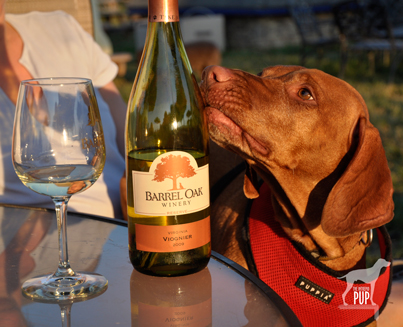
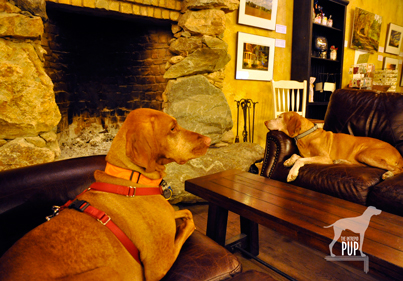

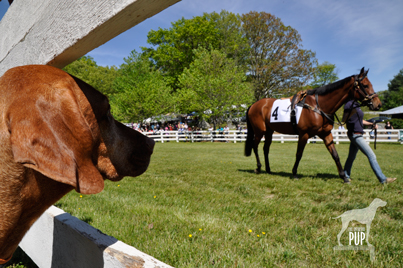
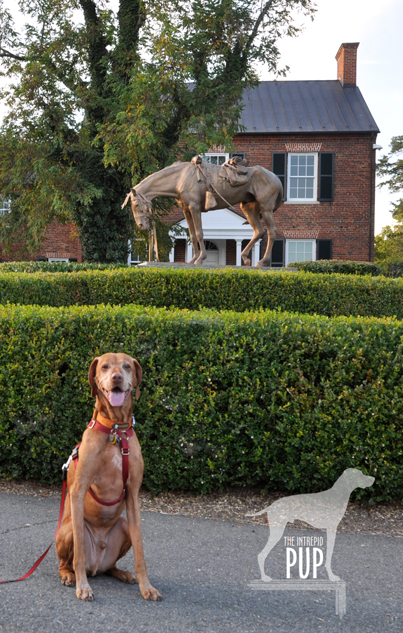
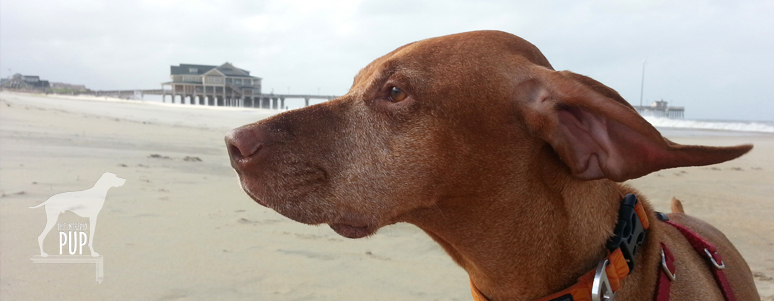
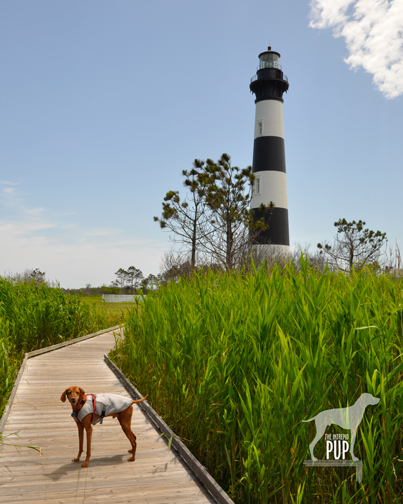
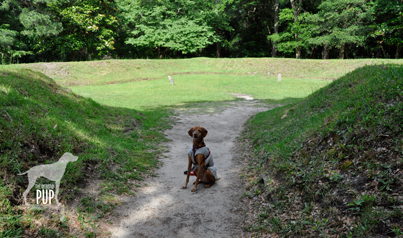
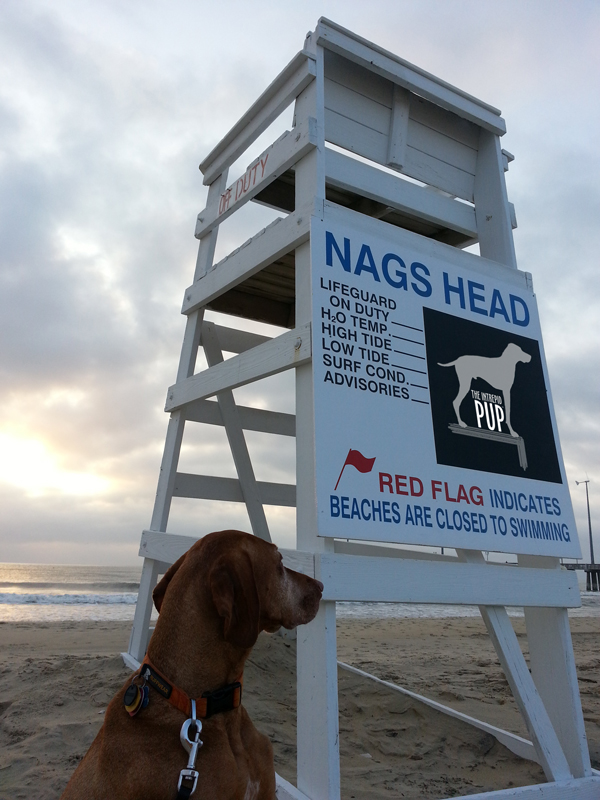
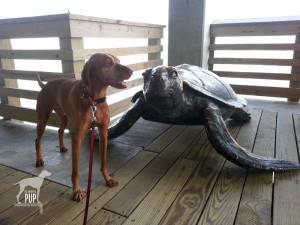
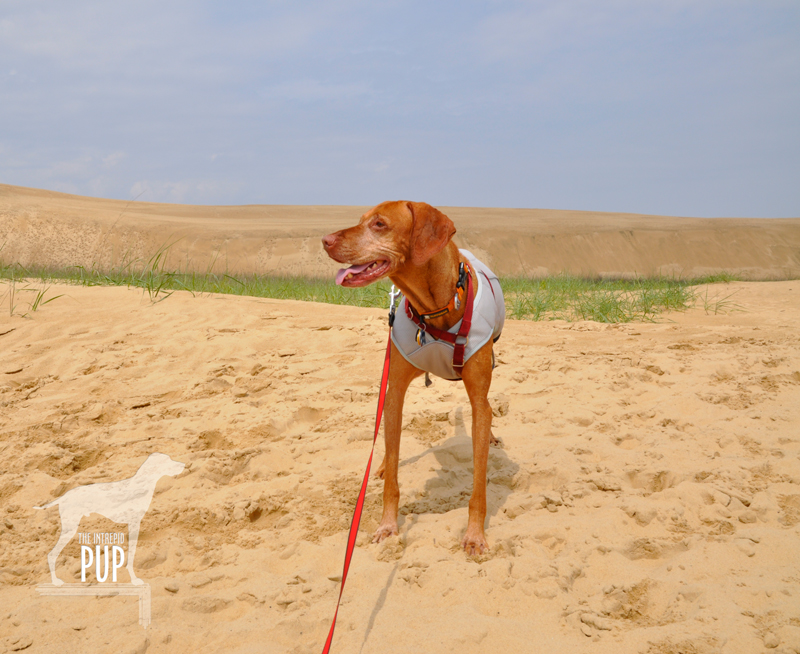
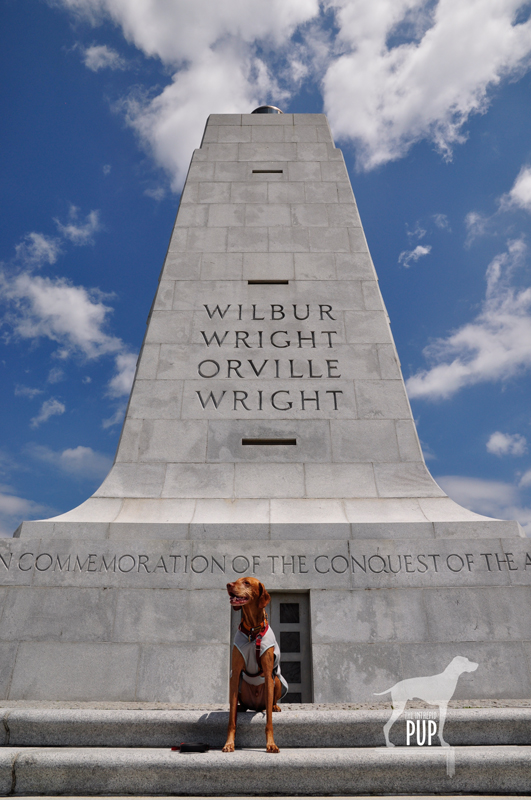
 You see a lot of dogs on the Outer Banks enjoying outdoor activities a-plenty. So at first we were puzzled by the fact that dog-friendly lodging and dining weren’t as abundant. It turns out that many dog-owning OBX vacationers rent beach houses by the week (Sunday to Saturday) so they’re not needing as many hotels and always have the option of cooking in. That being said, there are approximately a dozen pet-friendly overnight accommodations. We stayed at the
You see a lot of dogs on the Outer Banks enjoying outdoor activities a-plenty. So at first we were puzzled by the fact that dog-friendly lodging and dining weren’t as abundant. It turns out that many dog-owning OBX vacationers rent beach houses by the week (Sunday to Saturday) so they’re not needing as many hotels and always have the option of cooking in. That being said, there are approximately a dozen pet-friendly overnight accommodations. We stayed at the 

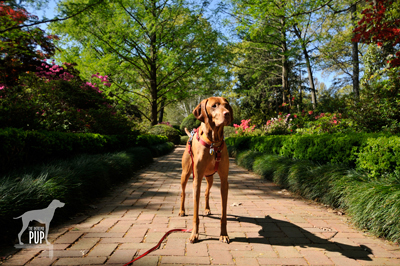

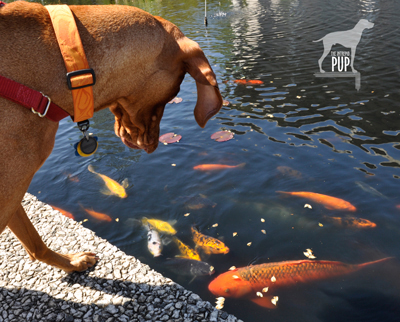
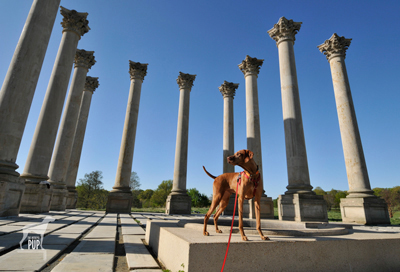
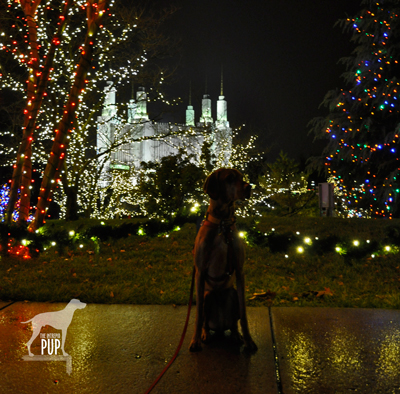
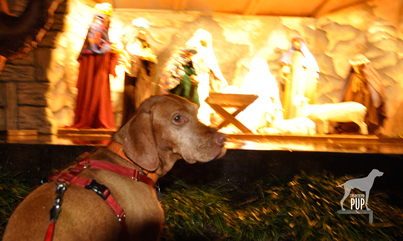
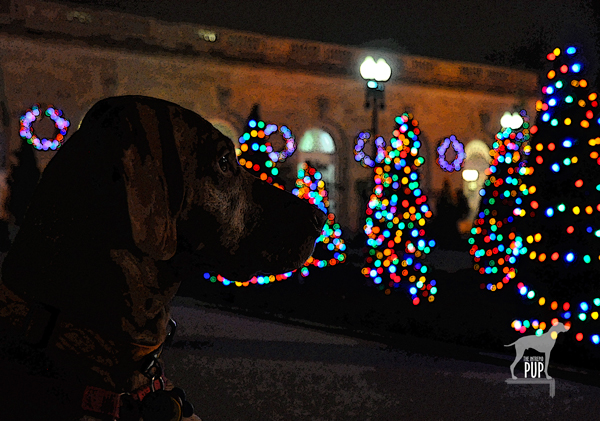
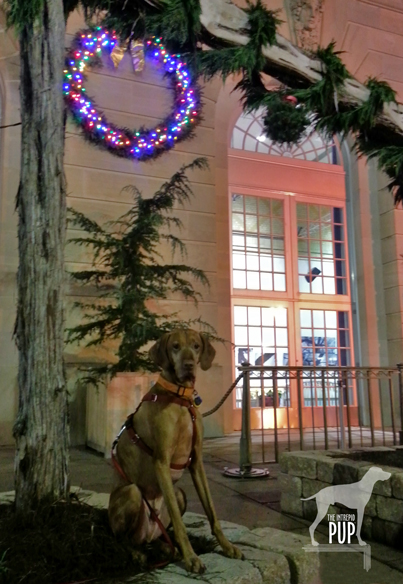
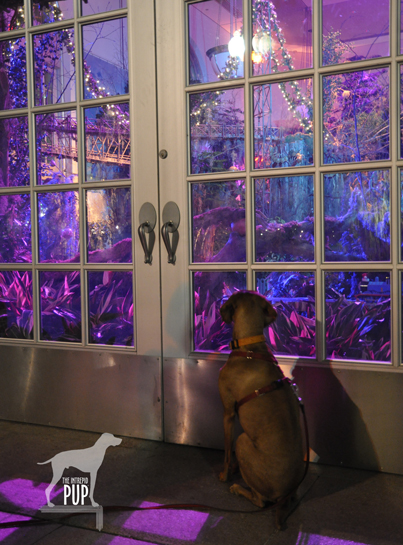

 It’s an age-old hunt scene with dogs chasing deer, but in this week’s
It’s an age-old hunt scene with dogs chasing deer, but in this week’s 








 to U.S. president Gerald Ford from Ford’s daughter and the White House photographer.
to U.S. president Gerald Ford from Ford’s daughter and the White House photographer.
 Intrepid Pup Yonder is hanging out in today’s
Intrepid Pup Yonder is hanging out in today’s 